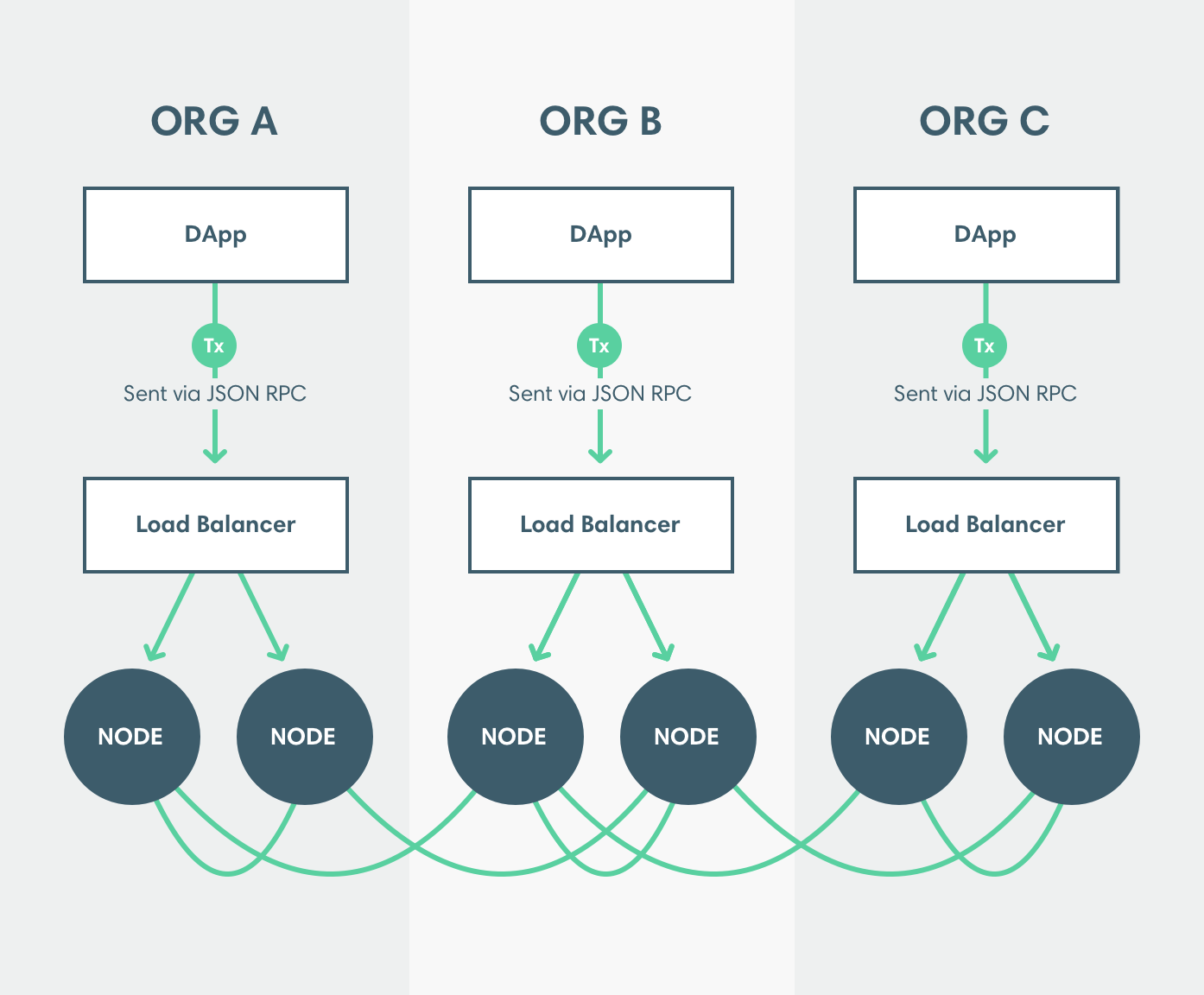High availability of JSON-RPC and RPC Pub/Sub APIs
To enable high availability to the RPC Pub/Sub API over WebSocket or the JSON-RPC API, run and synchronize more than one Besu node to the network. Use a load balancer to distribute requests across nodes in the cluster that are ready to receive requests.

We don't recommend putting bootnodes behind a load balancer.
We recommend using load balancers over WebSockets because WebSockets are persistent connections associated with specific nodes. If you use load balancers configured in sticky mode over HTTP instead, the connection sticks to the associated node even when the node is congested and there is a lower load node available. If you use load balancers not configured in sticky mode over HTTP, the connections may switch from node to node, so some JSON-RPC requests may not provide expected results (for example, admin methods, net_enode, net_peerCount, and eth_syncing).
Determine when a node is ready
Use the readiness endpoint to determine when a node is ready.
The minimum number of peers and number of blocks from the best known block for determining if a node considered ready is deployment specific.
Transaction nonces
Besu obtains the nonce for the next transaction using eth_getTransactionCount. The nonce depends on the transactions in the transaction pool. If sending eth_getTransactionCount and eth_sendRawTransaction requests for a specific account to more than one node, the eth_getTransactionCount results might be incorrect.
To get correct nonces when distributing requests across a cluster, either:
- Track the next nonce outside of the Besu node (as MetaMask does).
- Configure the load balancer in sticky mode to send requests from a specific account to a single node, unless that node is unavailable.
Subscriptions
You can subscribe to events using:
We recommend using RPC Pub/Sub over WebSocket because WebSockets connections associate with a specific node and do not require using the load balancer in sticky mode.
If using filters over HTTP, configure the load balancer in sticky mode to associate the subscription with a specific node.
Recover from dropped subscriptions
Dropped subscriptions can occur because of:
- A disconnected WebSockets connection
- The removal of the node serving the subscription from the ready pool.
If there is a dropped subscription, missed events might occur while reconnecting to a different node. To recover dropped messages, create another subscription and follow the process for that subscription type:
New headers
To request information on blocks from the last block before the subscription dropped to the first block received from the new subscription, use eth_getBlockByNumber.
Logs
To request logs from the block number of the last log received before the subscription dropped to the current chain head, use eth_getLogs.
New pending transactions
To request all pending transactions for the new node, use txpool_besuTransactions.
Nodes do not all store the same pending transactions.
Dropped pending transactions
To request all pending transactions for the new node, use txpool_besuTransactions.
Nodes do not all store the same pending transactions.
Syncing
The syncing state of each node is specific to that node. To retrieve the syncing state of the new node, use eth_syncing.